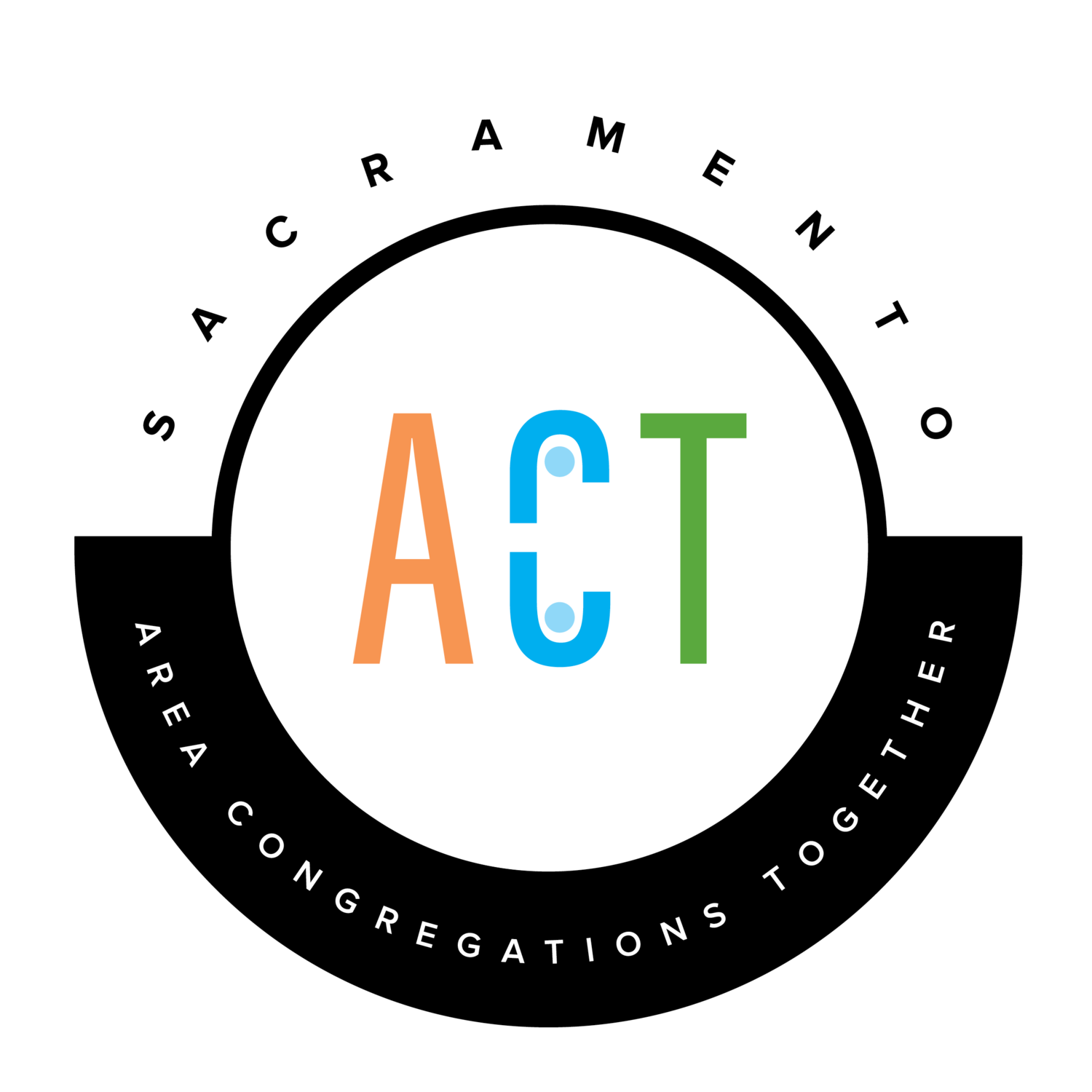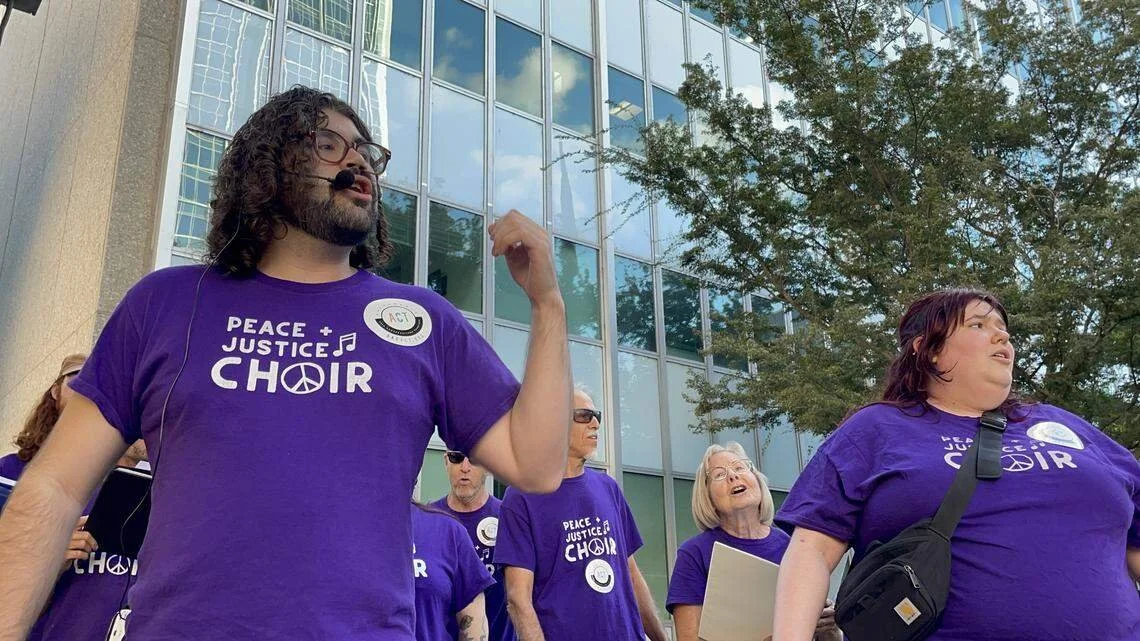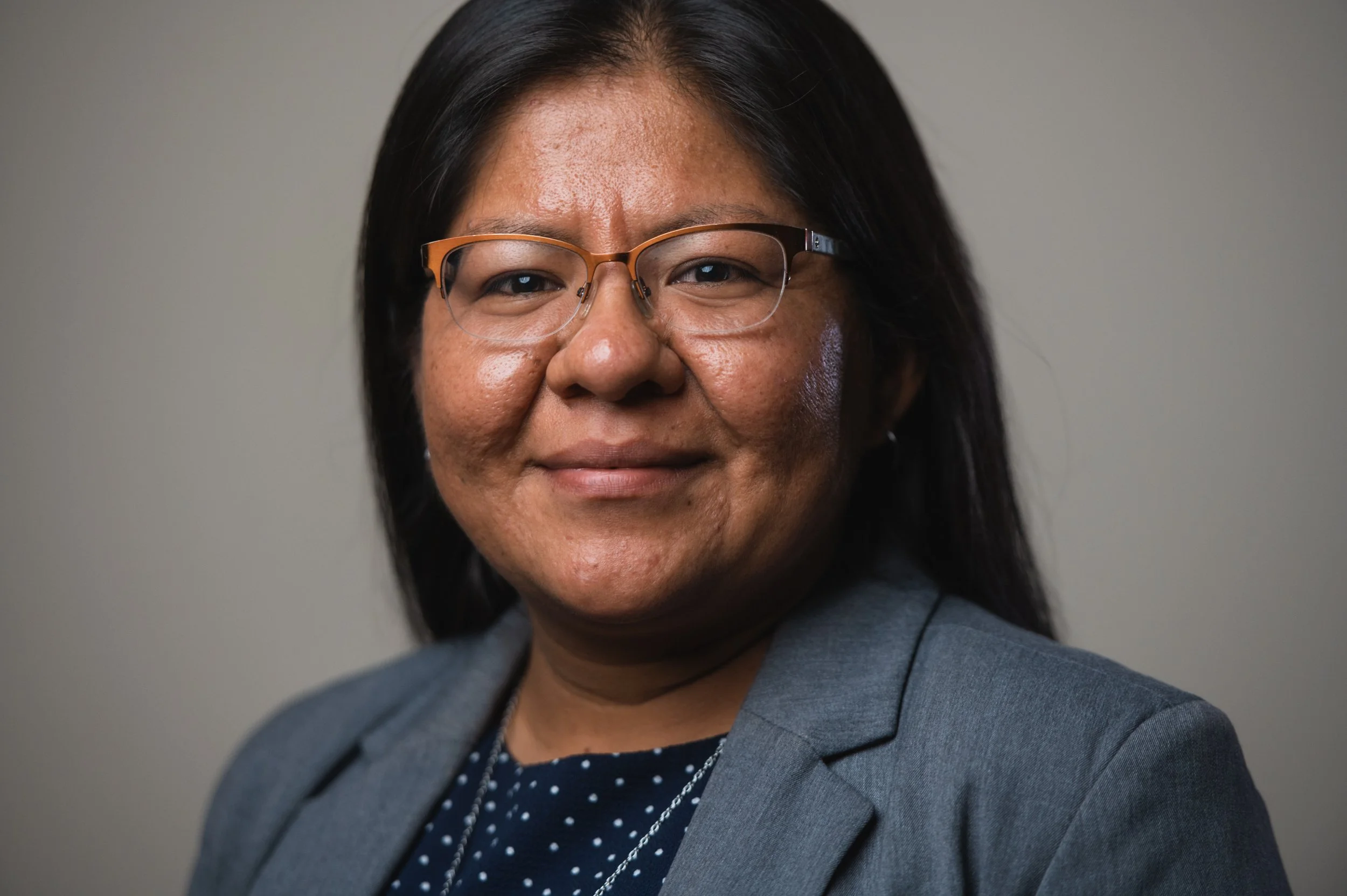Updated October 25, 2025 1:58 PM
Roughly 200 protesters shattered the quiet on Capitol Mall one Thursday evening this month, and they’re not done making noise. Sacramento ACT, a local interfaith coalition, plans to return next month with its prayer campaign to end what faith leaders call inhumane immigration detention practices at the John Moss Federal Building, which houses the region’s immigration court. At their first gathering, the first sounds of protest came not from bullhorns or drums but from song, including a modified rendition of a rousing civil rights anthem sung by the Peace and Justice Choir.
“Ain’t gonna let injustice turn me ‘round, Turn me round, turn me ‘round. Ain’t gonna let injustice turn me ‘round, I’m gonna keep on a walkin’, Keep on a-talkin’, Marching up to freedom land” Songs like this helped foster a sense of community and shared purpose among those gathered. Then, after the final chorus, came a voice of calm. “Breathing in, I’m aware of my in-breath. Breathing out, I’m aware of my out breath,” said the Rev. Brother Seth Samuels, his voice settling the crowd. “Breathing in, I feel the interconnectedness of life. Breathing out, I feel the spirit of divine love in myself.” All around Samuels, people of many faiths — and people of none — bowed their heads and added their ‘Amens” to prayers. They affirmed their kinship with immigrant neighbors who now view the 600 block of Capitol Mall with dread. They began with fellowship and an interfaith prayer vigil — punctuated by moments of laughter, song and cheers. They ended with a loud demonstration calling attention to what they described as unlawful detentions happening inside the Moss building. “We gather today not to be silent,” said NorCal Resist team member Heidi Phipps. “We gather because silence is the accomplice of oppression. We gather because indifference is a friend of the aggressor.” ‘I will always speak up’ Lupe Garcia Monarch, who emigrated from Mexico as a child, recalled being awakened by la migra, the term for immigration officers in Spanish, in the middle of the night decades ago. When her family was deported then, she said, agents didn’t break down the door of their farm housing. They didn’t force her parents to the ground. They didn’t zip-tie anyone.
“They treated us with dignity and respect,” Monarch said. “That is the biggest difference that I see today on those television screens.” Her mother even had time to cook up some burritos for them to take along to the holding cells in McAllen, Texas, she said, and one officer tussled her little brother’s hair as he headed to the stairs on the bus. “Now I have to carry my passport around all the time,” Monarch said. “I am afraid I will be apprehended and taken in just because my skin is brown.” Holding up her passport, Monarch lifted her voice and said: “I have reached the American dream, and I love this country. I will always speak up if I see that they are not working in the direction of a more perfect union.”
Faith leaders: ‘Welcome the stranger’ Although the faith leaders came from different houses of worship — or social media channels — they issued one moral call. Father Tom Lucas of St. Ignatius Catholic Church in Arden Arcade read from a new letter by Pope Leo XIV, urging Catholics to “welcome, protect, promote and integrate” immigrants. “Migrants and refugees don’t represent a problem to be solved,” the pope wrote. “They are an occasion that providence gives us to build up a more just society, a more fraternal world.”
Rabbi Mona Alfi of Sacramento’s Congregation B’nai Israel said that in the Torah, the Jewish people are commanded 36 times to care for and protect the strangers in their midst. She connected the gathering to Sukkot, the Jewish festival commemorating 40 years of wandering in the wilderness. “We build Sukkot, or huts, as a reminder of the shelters that God provided for us when we were refugees,” Alfi said. “We are supposed to live in those huts for a week so that we won’t forget what it felt like to be vulnerable and at risk, to be refugees in search of a home.” The Rev. Roger Jones of Sacramento’s Unitarian Universalist Society of Sacramento said: “We remember the call to speak out against cruelty. ... People of conscience are appalled by the denial of the human rights of our immigrant families and neighbors, their parents, their children.” Everyone knows what a blessing it is to be supported when they are feeling alone, said Samuels, an agnostic who founded and hosts “The Good World” YouTube channel. “We reject the campaign of terror that is being waged in our names, and we stand in solidarity with the families who are being terrorized,” he said. “Cruelty harms victims and oppressors.” Bearing witness, then and now Phipps said NorCal Resist’s Court Watch volunteers have documented dozens of arrests of immigrants, people detained while attempting to maintain their place in line. At one point, she said, 10 men were crammed into a tiny cell in the Moss building. They were forced to sleep on the bare floor. They were given just one meal a day. And, they had inadequate toilet facilities. Among the crowd was JoAnn Fuller, 80, who stood wearing a purple Peace and Justice Choir t-shirt. The protest, she said, reminded her of Selma, Alabama, in 1965. “I was studying history,” she said, “but history was being made right then.” Fuller and her schoolmates piled into six cars and drove cross-country from San Francisco State University to join the march for voting rights. Now, six decades later, she feels that same call to action in the fight for immigrant rights in Sacramento. “People are saying immigrants should get in line and do things legally,” Fuller said. “These people are in line, and they’re doing things legally, and they’re getting deported for it.” Fuller said she was encouraged that so many young people came out to pray and protest. “We as citizens have rights in this country, but we also have responsibilities,” she said. “One of our responsibilities is to pay attention and to hold people accountable when they’re not acting lawfully. If we can’t do that, we don’t have a democracy anymore.”
Organizers said their work isn’t over. That’s why they plan to return to the Moss building for a noon prayer service on Nov. 13. This story was originally published October 23, 2025 at 10:37 AM.
Read more at: https://www.sacbee.com/news/local/article312596434.html#storylink=cpy




